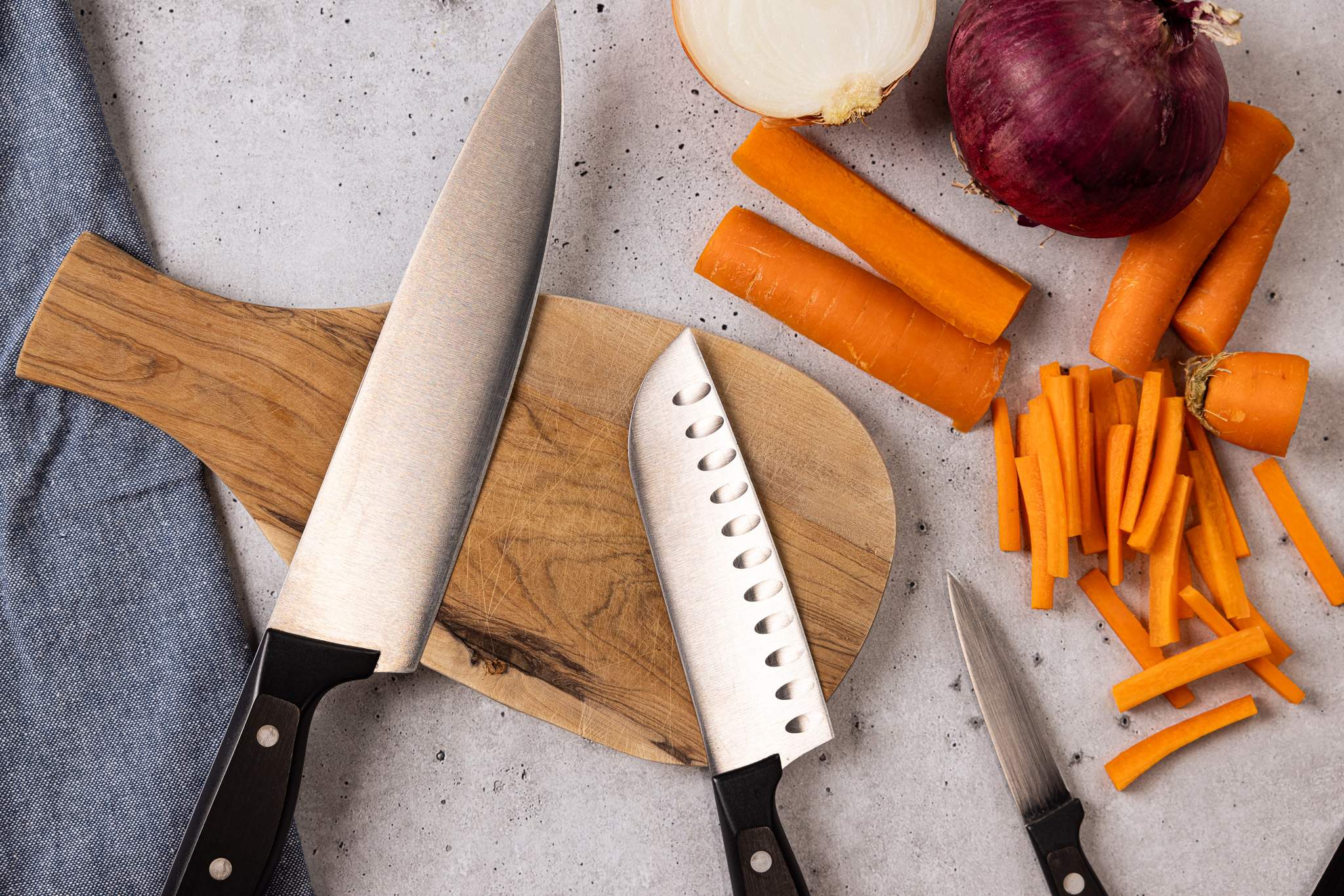For many professional chefs, their knives are their life; often working with multiple types daily for 8+ hours. Knowing how to use knives properly is essential knowledge when working in a kitchen and this handy guide will break down all the key tips and tricks to help you level up your cooking game. For those who are new to the kitchen, it can be very intimidating to know what knife to choose, how to use it, and how to take care of it. But if you can master the core understanding of knife skills it can save you time, and money (and your fingers!).
Types of Knives
The first step to developing your knife skills is to choose the right knife for the job. With so many to choose from it can be very difficult to know which is the right one. That’s why we made this handy list to help cut through the clutter and sharpen your knowledge of knives.

Chef's Knife: A classic choice with a lot of versatility in the kitchen. Great for chopping lettuce for salads, dicing onions, and mincing herbs and vegetables.

Santoku Knife: This knife is known for its characteristic rounded front end and dimples along both sides of the blade. The dimples on the knives help prevent tough items from sticking to your blade. As a result, you can focus on the chopping without having to clean your blade often. This knife is great for chopping denser vegetables like sweet potatoes, watermelon, cheeses, and any dense produce that may be difficult with a chef’s knife.

Paring Knife: This is one of the smallest knives in a chef’s arsenal but arguably one of the most useful. A paring knife is known for making intricate, precise cuts that other knives can’t. Because of its size, it allows for closer, finer cuts to make items like minced shallots, sliced strawberries, peeling tomatoes, and deveining shrimp.
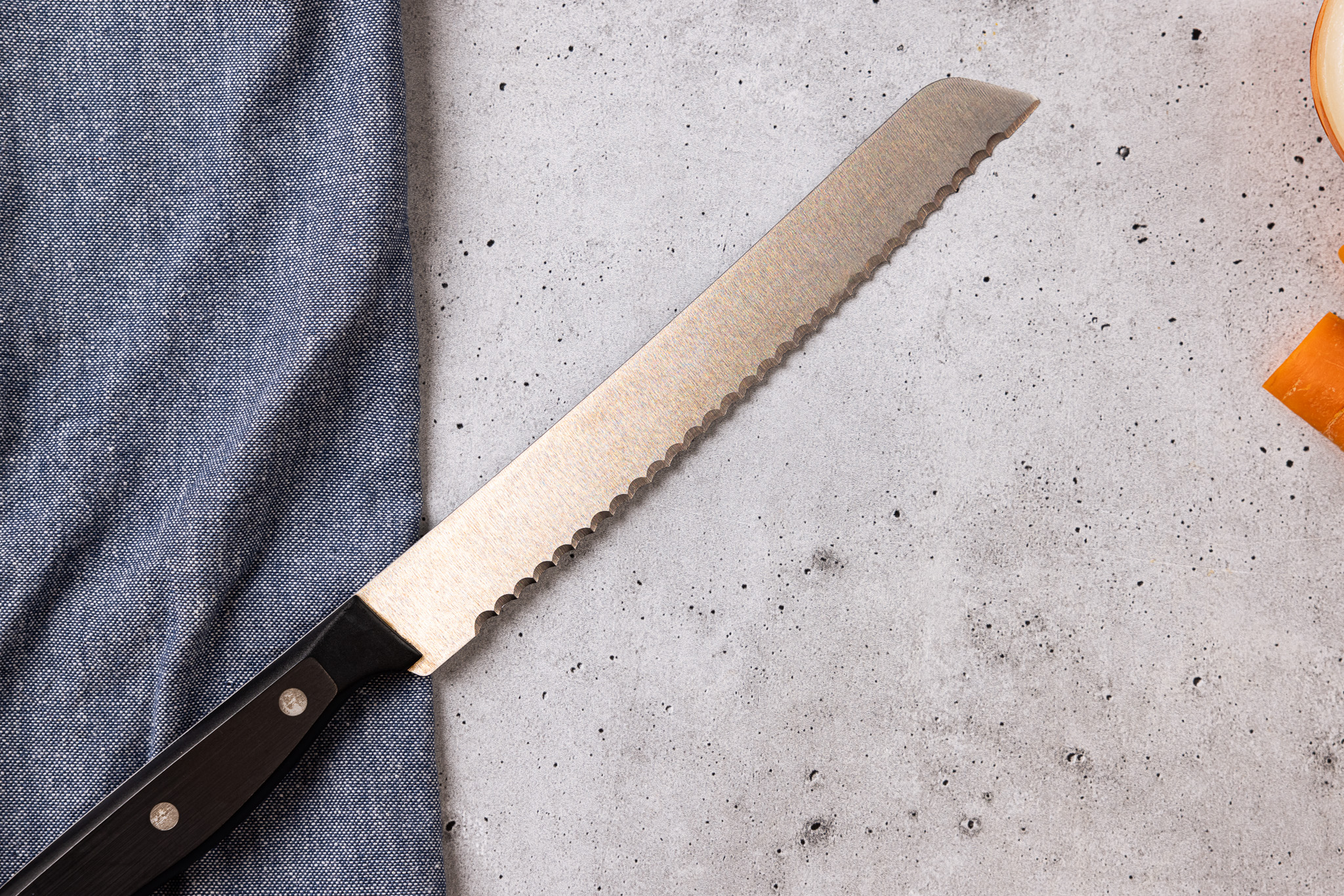
Bread Knife: This is one of the most recognizable knives because of its long, thin blade with serrated edges on the end. This serrated knife is great for slicing into difficult items like bread, baguettes, biscuits, and even tomatoes. This is a preferred knife for these items because its serrated edge helps prevent damage to the exterior of the items and maintains their shape.
Cleaver Knife: Arguably one of the most recognizable knives, a cleaver is characterized by its long, rectangular body. Because of its bulky blade, it is commonly used to cut through animal bones and meat. Using a cleaver often requires a larger swing when chopping through items and you can see chiefs raising their cleavers away from the board before chopping. If you notice a hole in the top left corner of the blade, that is for hanging on a wall for safekeeping.
Butcher Knife: A butcher’s knife has a long thin blade about the height of a bread knife but without serrated teeth on the blade. It often curves up much more than a chef's knife. This makes the blade more agile when cutting through items like cheese and meats. A butcher’s knife is great for Carving the meat off bones with such precision. You can use it on steaks, pork chops, whole chicken, and more!

Steak Knife: If you love meat, you’ve probably used a steak knife in your life. Small like a paring knife and typically having a serrated blade, this nimble knife is great for cutting up steaks and other meats while sitting at the dinner table. It also does wonders on fruits like apples, cheeses, and other produce without having to make you get up.
Basic Knife Skills
Handling knives
Now that you have the right tools for the job, it’s important to know how to use them. Here, we will go over hand placement to avoid cuts, scapes, or other knife-related injuries. Here are some tested methods that help keep you and everyone around you in one piece.
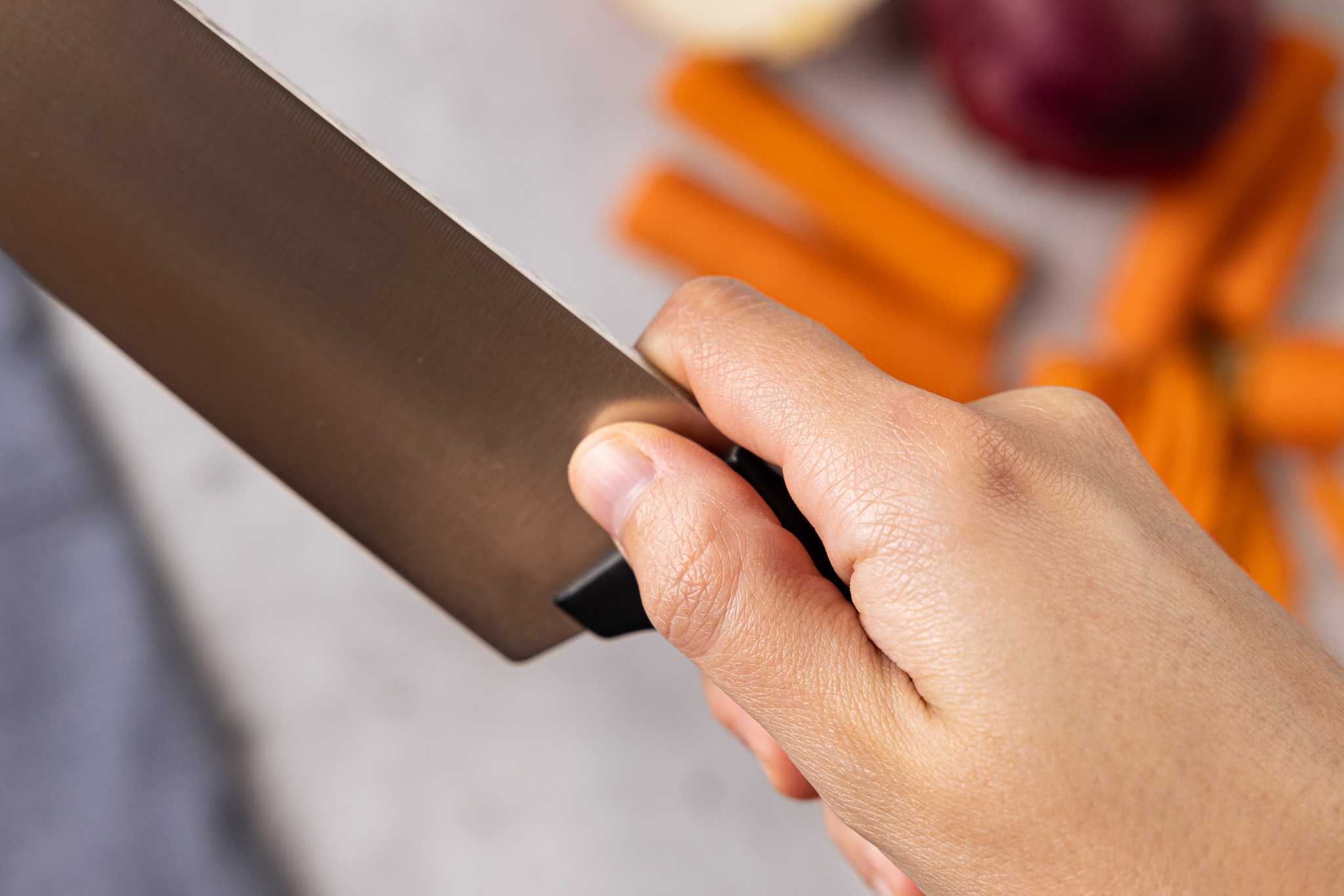
Pinch Grip: This is the name given to your knife-holding hand to ensure you are holding the knife properly. What you are going to do is take the knife and pinch the blade just above the hilt of the knife. This will help create a strong grip and hold your knife in place. Let the remaining fingers grip the handle and begin rocking the knife back and forth to see where your hand comfortably sits on the handle. This is the best grip for your knives because it keeps your fingers far away from the edge of the blade and prevents arthritis-related swelling from forming in your hands.
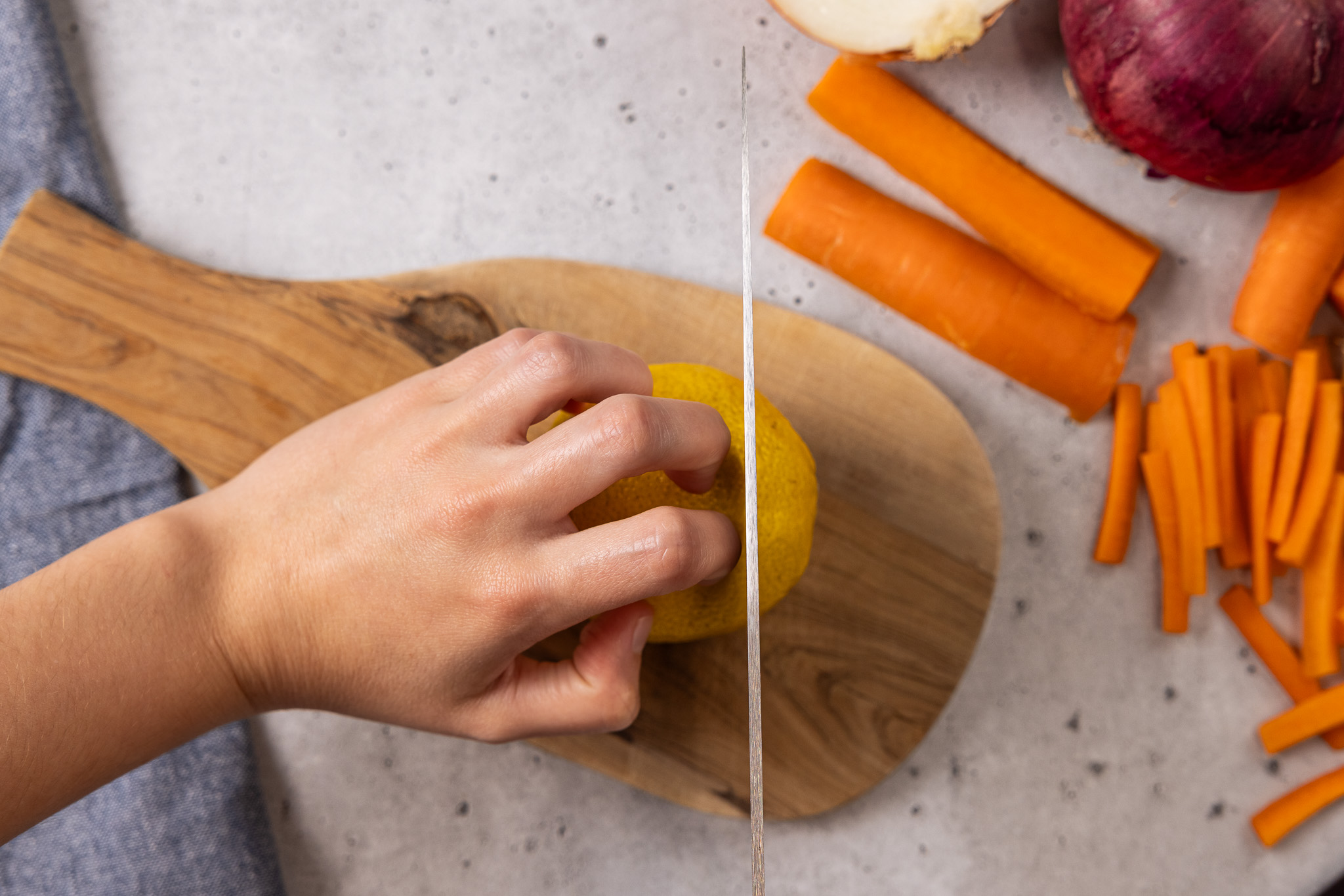
The Claw method: This is the classic method for your hand formation of your hand that isn’t holding the knife. To achieve the claw formation you take your little finger and thumb hold the foodstuff down and the knife briefly runs over your knuckles, keeping your fingertips safe from sharp blades.
As you begin your chopping it’s important to check where your fingers rest as they may move while cutting produce. Keep an eye out for your thumb resting on the cutting board or your pinky finger sliding out of formation. It’s best to go slower and safer at first to nail the technique before racing to chop ingredients like a master chef.
Cutting Techniques
Once you are comfortable handling the knives it is time to hone your craft. There are many techniques for cutting items. Learning different cutting techniques will help get better at making recipes and elevate the presentation of your dish. From chopping and slicing to julienning and brunoise, some slicing techniques can take years to master, and to get there you need to nail the basics. Here are some essential cutting techniques to begin with.
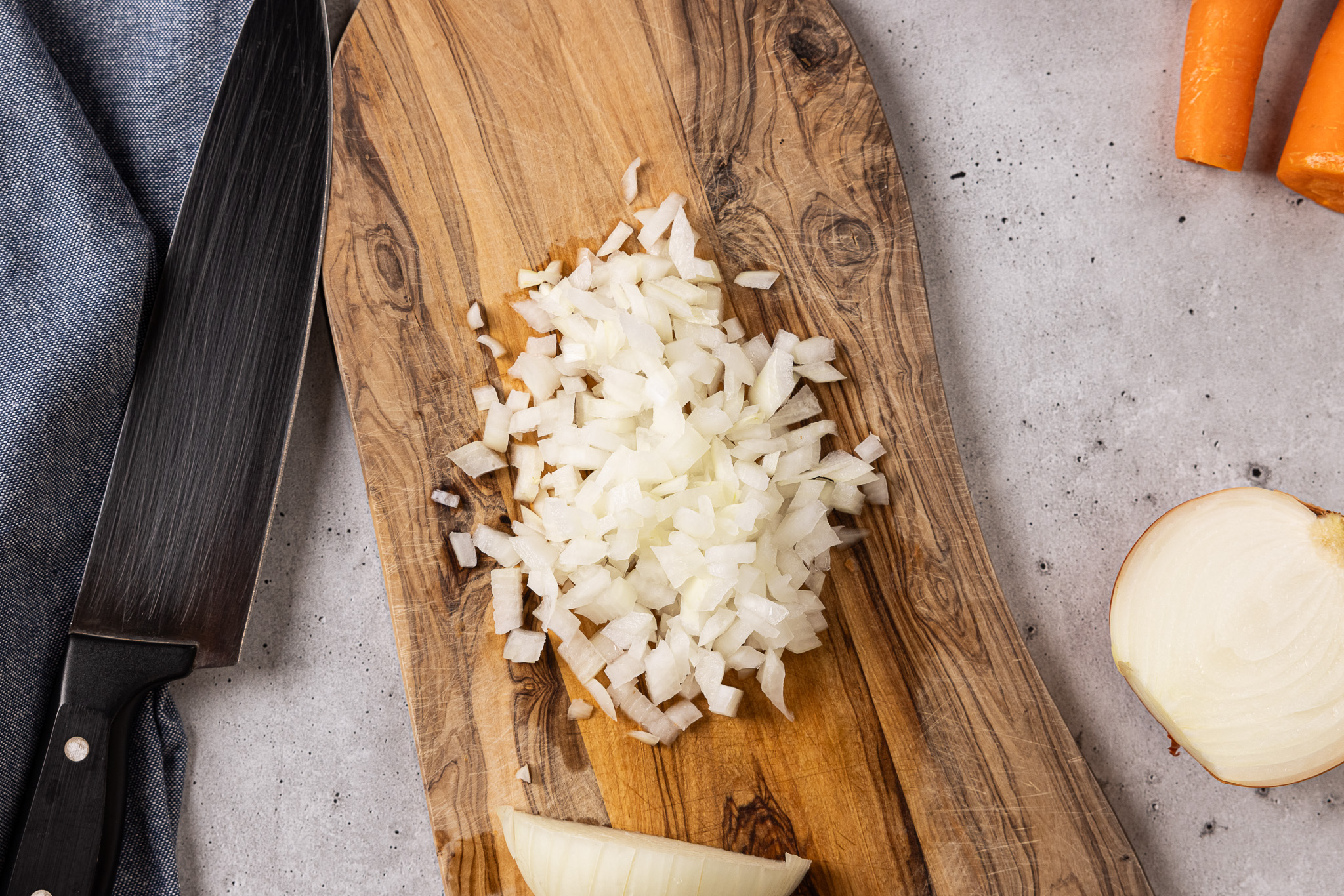
The Rocking Motion: This name comes from the way the knife moves across the cutting board. Like a rocking chair, you position your knife from the tip first and slice it down following the motion through. Once the end of the blade touches the board, you reverse that motion back into the starting position. This is great for chopping up vegetables or dicing onions into finer pieces.
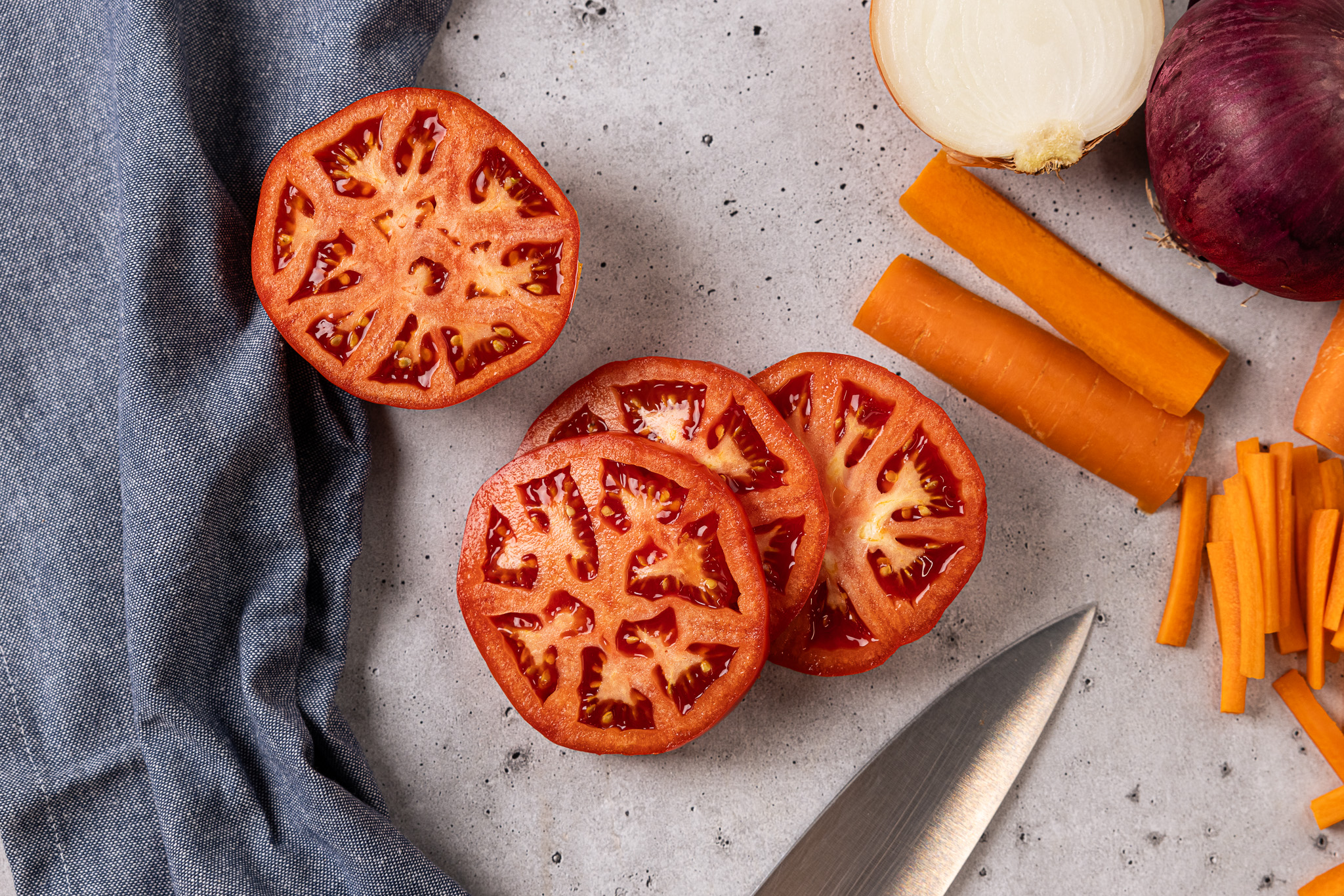
The Slice: This motion is great for when you need to create finer, precise cuts. Think carrot pieces and fine garnishes, that’s where slicing comes in handy. To slice you are going to want to make sure the knife is above the board and parallel to it. As you move the knife down toward the board the whole edge of the blade should touch the board at the same time. This forward motion can help build momentum and you can continue slicing items in rapid succession. It’s always great to start slow and maintain that claw formation before trying anything risky.
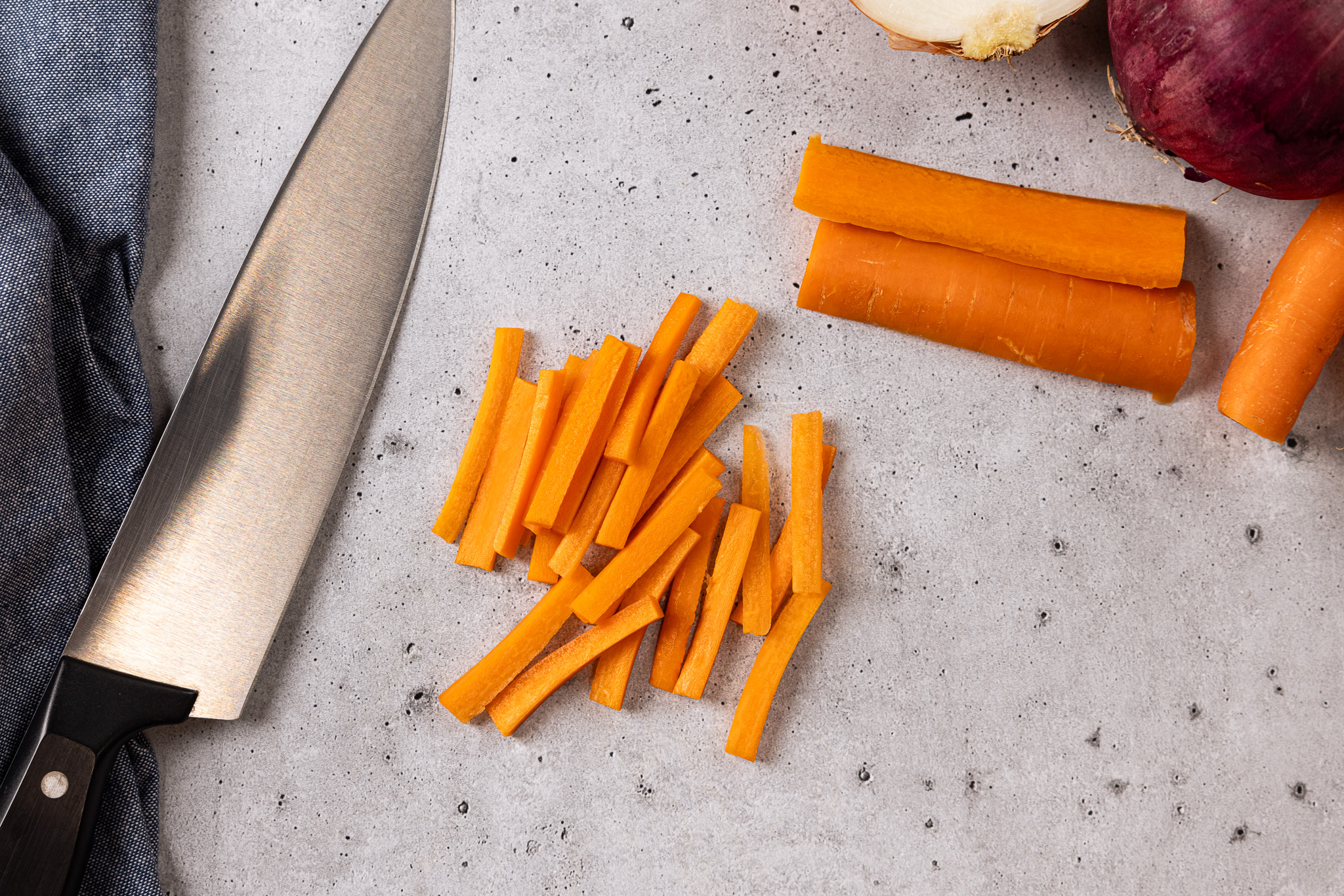
Julienne: Julienne is a knife technique used to cut food into thin, uniform matchstick-like strips, approximately 1/8 inch wide and 1-2 inches in length. It's commonly employed for vegetables and other ingredients in various culinary applications. To achieve a julienne cut, start by slicing the ingredients into planks, stack and align the planks, and then make lengthwise cuts to create the thin strips.
Knife Care & Storage
Now that you know how to use your knives it’s important to know how to take care of them. A honing rod is a kitchen tool that lets you place your knife at the hilt of the rod and bend the blade back in shape. It’s important to know that a honing rod only bends the blade and doesn’t sharpen your knife. Knives will dull over time as they're used. Remember, a dull knife is a dangerous knife so it's important to get your knives regularly sharpened. To sharpen your knife you will need whetstones with specific grit. The higher the grit number, the finer and sharper you can make your knife. Take careful practice when sharpening your knife with a whetstone to maintain your knife’s blade and it can help elevate your knife-cutting skills. You can also take your knives to a professional sharpener to ensure that they're sharpened safely and properly.
Kitchen knives are also more expensive than typical knives so it’s so important to properly wash and store them as well. If your handle is made out of wood, be sure to stay away from too hot water, or else it can warp them. Knives that are made out of carbon steel or other metals that aren’t stainless steel are prone to rusting so be sure to wipe them off after every use, especially after cutting acidic items like tomatoes and lemons.
For most knives, washing them with soap and water is the way to go, rinsing with warm water and drying immediately after will help maintain the cleanliness and overall quality of the knife. Avoid using the dishwasher as high heat and harsh chemicals and wreck both the blade and the handle. Once clean, you can store them in your knife drawers, wood blocks, magnetic racks, or in a knife roll or rolled up in a kitchen towel if you intend to transport them. Some higher-end knives come with their own sheathes to avoid any damage when transporting them.
Mastering knife skills is an essential step in becoming a well-rounded cook. By choosing the right knives, learning proper techniques, and prioritizing safety, you can elevate your cooking game to new heights! Whether it’s for a casual late-night dinner or impressing guests with a weekend feast, using these important techniques will elevate your culinary game and save you so much time.
